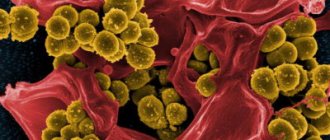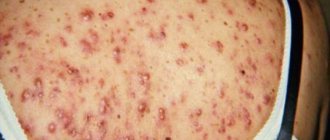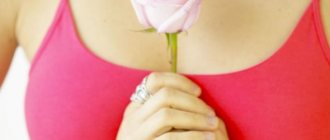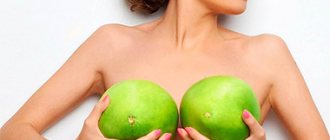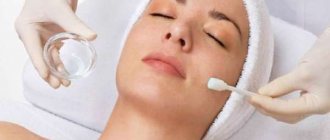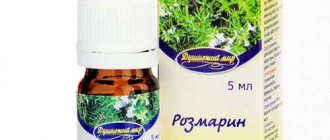What is milk
Have you ever wondered what milk is? In the physical sense, these are particles of fat suspended in water. Its chemical composition is quite complex. In principle, it contains all the substances necessary for the life support of mammals, which are also very easily absorbed:
- Essential amino acids are the building blocks for cells.
- Animal fats provide energy reserves and also protect the skin from the negative effects of the environment.
- Simple sugars are easily and completely digestible, a quick source of energy.
- Mineral salts – supply the body with minerals and trace elements.
- Fat-soluble vitamins A and D – regulate the functioning of the sebaceous glands, soften and smooth the skin.
- B vitamins – affect the speed of metabolic processes, improve the appearance and structure of the skin.
A special feature of milk is the presence of casein, a protein that can increase the absorption of other nutrients. It is bound with calcium, and when soured it precipitates. By the way, it is often perceived as foreign and provokes negative reactions in the body.
Why do acne happen?
But can you really get acne from drinking milk if it's so healthy? Imagine - yes. And for a number of reasons, each of which is worth considering separately. I note that we are not talking about lactic acid products, since they have a slightly changed chemical composition.
Most often, rashes are caused by fresh milk. Although it is possible that the entire dairy group can have a negative effect on the epidermis - everything is individual.
Intolerance
Typically, acne from dairy products occurs in adults. Many nutritionists generally advise people after 20-25 years to completely remove fresh milk from their diet. Scientific studies have shown that from this age the production of the enzyme that breaks it down, lactase, decreases significantly.
However, there are children whose content is very low or is completely absent from birth. From the very first days they have to be transferred from breastfeeding to artificial nutrition: soy milk or lactose-free formulas.
Milk intolerance is manifested by symptoms that occur already in the first hours after drinking it, even in small quantities:
- itching, redness and irritation of the skin;
- multiple small rashes;
- indigestion;
- increased gas formation;
- severe diarrhea;
- Nausea and vomiting are possible.
Such conditions can only be treated symptomatically. When milk is completely eliminated from the diet, the skin clears up again and the rashes disappear without a trace.
Excessive consumption
In the absence of allergies, a glass of milk a day really brings tangible benefits to the body. It supplies it with vitamins and calcium, improves immunity, and is an excellent and easy source of nutrition. Casein is well absorbed and serves as a building material for muscles, which is why athletes love it.
But whole milk contains quite a lot of sugar and fat. And these products are among the TOP 5 that cause acne. And if you constantly drink half a liter (or even more) of milk at a time, you can easily cause hyperactivity of the sebaceous glands, which will lead to acne.
Hormones and antibiotics
Milk contains a fairly high content of vitamin D, which scientists in the last decade have classified as a hormone. It directly affects the endocrine system and its excess is no less harmful than its deficiency. Drinking milk increases testosterone levels, and it activates the sebaceous glands.
But that's not all. It is no secret that unscrupulous producers pump cows and other dairy animals with hormones for rapid growth and increased lactation. Naturally, they end up in milk, and with it in the human body. And such an effect on the endocrine system, not prescribed by doctors, certainly does not bring any benefit.
Animals' milk may also contain antibiotics that they received to prevent diseases. They do not have a significant effect on people with strong immunity. But in a weakened body, they can provoke dysbacteriosis and disruption of the normal functioning of the gastrointestinal tract. Hence – pimples and acne on the face.
Chemicals
There are no chemicals in natural fresh farm milk. As in high-quality store-bought, bottled in glass or plastic bags with a minimum shelf life of up to 3-4 days. These are the products that should be preferred.
But the majority, alas, prefer milk from tetra packs, since it does not spoil so quickly. They don’t even think that a long shelf life is ensured by a high content of chemical additives: stabilizers and preservatives. And the inner surface of the bags is treated with the same antibiotics. All this can easily provoke an allergic reaction, intestinal disorders and acne.
Symptoms of lactose allergy
If there is a genetic deficiency of the enzymes responsible for the digestion of milk protein, an allergy to a product of animal origin occurs. Lactose intolerance most often occurs in adults.
Milk can cause allergies
In addition to skin rashes, other symptoms can often be observed, the main ones being:
- bowel dysfunction (usually diarrhea);
- increased gas formation;
- abdominal pain;
- rashes accompanied by itching.
In more severe cases, angioedema may develop against the background of milk allergy, requiring immediate medical treatment.
Cow or goat
Some people believe that goat milk is safer and does not cause acne. There is some truth in this, but everything is relative. Goat's milk does have lower levels of lactose than cow's milk. Therefore, people with intolerance to the latter can often drink it.
The antibacterial and anti-inflammatory properties of goat's milk are higher than those of cow's milk. It does not form a mucous plaque in the intestines and does not irritate the gastrointestinal tract. Therefore, it is better tolerated by people with diseases of internal organs.
In its chemical composition, goat milk is as close as possible to human milk, therefore it is absorbed almost completely and very quickly. It has a higher content of calcium and iron. But in terms of fat content and sugar levels, it is almost the same as cow’s milk. So you shouldn’t abuse this milk either.
Presence of hormones in milk
Currently, large farms containing large numbers of cattle feed cows with all kinds of hormonal injections. The use of drugs of this type makes it possible to increase the livestock population several times faster. This fact undoubtedly affects the quality of milk.
People who often consume store-bought milk as food are often susceptible to acne due to the large amount of hormones contained in the product.
Homemade milk usually does not cause rashes, as it is an environmentally friendly product. You can eat this product and cheeses, cottage cheese, and yogurt made from it calmly, without worrying about your health.
What to do
But if dairy products and acne are still interconnected, then maybe you should completely abandon the latter so as not to provoke a deterioration in the condition of the skin? I think you need to take extreme measures only in case of individual intolerance. For others, simple tips can help you avoid acne. You need:
- buy only fresh milk from trusted producers;
- be sure to boil it before use;
- Do not buy packaged in tetrapacks in the store;
- for problem skin, give preference to low-fat;
- alternate fresh milk with lactic acid products: yoghurt, kefir, ayran;
- drink no more than one glass per day.
I strongly do not recommend constantly adding whole milk or cream to your coffee. I explained in detail why this can cause rashes in another article.
How to deal with skin acne from dairy products
Doctors do not recommend frequently consuming milk from stores due to the presence of harmful enzymes in it. It's better to switch to a natural product. If a severe allergy occurs, you should immediately consult a doctor. Before the ambulance arrives, the patient needs to take an antihistamine (Suprastin, Tavegil).
Pimples that appear from milk definitely require local treatment. The skin is treated with antiseptics such as salicylic and boric alcohol.
It is also recommended to adhere to a diet, eliminating fatty, dairy and fried foods. Eat more plant foods. Drink as much water as possible to remove harmful elements from the body. Acne can disappear if dairy products are used externally, making all kinds of masks.
- Kefir mask. It requires ½ cup of wheat flour, 1 tsp. soda, 0.05 liters of cold kefir. Mix the ingredients, apply the mixture to your face for 20 minutes, and then rinse. Repeat every other day for two weeks.
- Mask based on cottage cheese and nettle: 2 tbsp. dried nettle leaves, 1 glass of boiling water, 100 g of cottage cheese. Pour in nettle and leave for 40 minutes. Mix the infusion with cottage cheese. Apply the prepared mixture to your face for 15 minutes. Rinse off with warm water.
- Cream and yeast mask: 2 tsp. yeast, 1 tbsp. flour, 3 tsp. buckwheat honey, 0.05 ml. cream. Pour the yeast with heated cream. Add flour and honey. Apply the mask to clean skin for 15 minutes. Rinse off and apply cream to skin.
All of these masks will help restore smoothness and elasticity to the skin, and also prevent the recurrence of acne.
Plant milk
If you still cannot normally consume animal milk, and acne constantly appears from it, you can use vegetable milk as an alternative. It completely lacks animal proteins, to which allergies can occur. But in terms of the content of fats and valuable nutrients, they are not inferior to natural milk, and sometimes even surpass it.
The most popular types of plant milk among vegans and people with lactose intolerance are:
- coconut is not a liquid that accumulates inside the fruit, but highly crushed shavings mixed with water;
- sesame - seeds processed in a coffee grinder are also dissolved in clean water;
- soybean - dry beans are soaked overnight, crushed into puree and blended with water;
- rice - prepared similarly to soy, but from raw rice grains;
- almond - the cores of unroasted nuts are used for its preparation;
- cedar milk is a very healthy, but the most expensive plant milk.
When replacing cow's milk with plant-based milk, keep in mind that it is very high in calories. Therefore, with frequent use, you can get an unpleasant bonus in the form of a few extra centimeters on the waist and hips. Soy milk contains a high content of phytohormones; men should not get too carried away with them.
Summing up
As you can see, excessive consumption of fatty milk can actually cause the appearance of purulent and subcutaneous pimples and acne. A low-quality product, even drunk in small quantities, often provokes rashes. Therefore, when purchasing, it is advisable to follow the recommendations listed above, check the expiration date and integrity of the packaging.
Fermented milk products will not have such a negative effect on the condition of the skin if you choose low-fat varieties, without dyes, flavors and synthetic flavoring additives. According to reviews from most of my clients, regular consumption of kefir and yogurt helps normalize the functioning of the sebaceous glands, and masks made from them can degrease and moisturize the face. The results can be assessed by comparing photos before and after the course of their use.
I would be interested to read your opinions about milk and dairy products in the comments. Have you ever had acne or rashes from it? How did you cope with the situation? Which dairy products caused problems and how quickly did they disappear after adjusting the diet?
